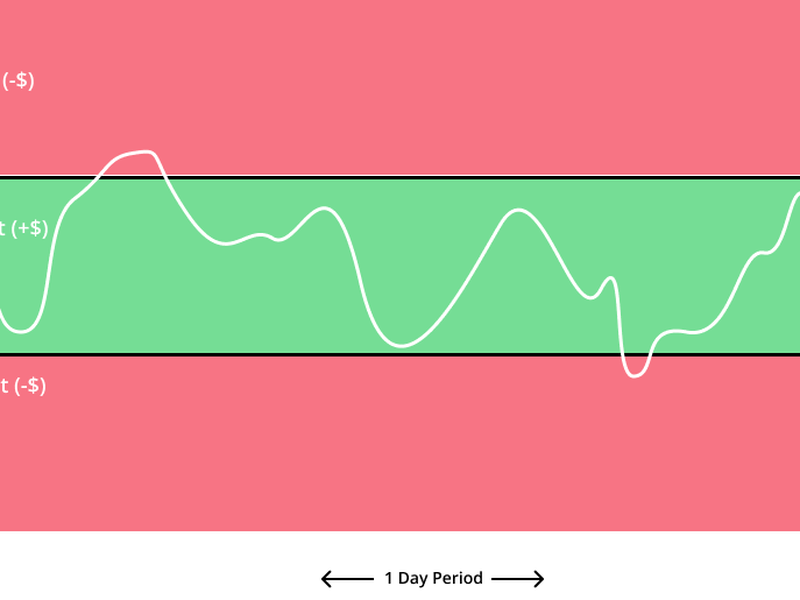A decentralized finance (DeFi) product that launched earlier this year to help investors profit from a sideways trending market is generating desired results.
The “Crab” strategy, designed by leading DeFi options platform Opyn, is built to make money during bouts of low ether (ETH) price volatility. It has earned 14% returns in U.S. dollar terms and 42% in ether terms since its version (v)2 went live in late July. Ether has dropped 20% since the end of July, however, the cryptocurrency has primarily traded between $1,100 to $1,300 in the past four weeks.
The strategy is yet another example of the DeFi industry helping investors bypass complexities involved with traditional option strategies like a “short straddle,” often set up by sophisticated market participants during a market lull.
In case of a short straddle, a trader sells bullish and bearish options contracts called a call and put on a centralized exchange. If the market stays rangebound, the short straddle makes money. Setting up such multi-leg strategies is easier said than done, as traders must select appropriate levels to buy/sell options and the expiration date and actively manage the position as several factors influence options prices.
In Opyn’s crab strategy, users only need to deposit ETH as collateral to start profiting from a comatose market. And investors seem to be piling money into the automated product.
“When Crab v2 went live, the strategy had 888 ETH. Currently, the strategy has 5,378 ETH, a 505% increase in three months,” Wade Prospere, head of marketing and community at Opyn, told CoinDesk.
Crab’s inner working
The crab strategy is built on top of Opyn’s Squeeth or squared ether – an index tracking ether’s price change to the power of two and allowing buyers to earn more when the market rallies and lose less during price drops in return for hefty funding rates – costs for keeping the so-called power perpetual position open.
After users deposit ETH as collateral, the crab vault combines long ETH with a short (bearish) Squeeth position, creating a market-neutral position.
That allows crab depositors to collect the funding rate – the cost of holding long positions – paid by the Squeeth buyers without having to worry about the risk of a rally in ETH and Squeeth. Due to the attractive payoff, the funding rate paid by buyers is higher than that paid in a standard perpetual futures market and a 2x leveraged long position.
Essentially, the vault is short Squeeth with a hedge.
“The crab strategy allows users to earn funding (yield) from being short Squeeth regardless of whether ETH will move up or down. In other words, Crab v2 is a delta-neutral [market neutral] strategy,” Prospere said.
The strategy rebalances every Monday, Wednesday and Friday at 16:30 coordinated universal time to maintain the market-neutral position.
“If ETH price decreases, the strategy sells Squeeth tokens for ETH (meaning it buys more ETH to remain market neutral),” Prospere said. The crab, therefore, stacks ether during the bear market.
Depositors receive a payoff if ether does not move X% up or down between rebalances. The percentage is determined by the funding rate received from the Squeeth buyers and keeps changing daily.

At press time, the crab strategy promised to pay out if ether did not move more than 4.22% between rebalancing periods.
While the one-click strategy to profit from potential consolidation may look appealing to retail investors, it is not without risks. As with short straddle, crab depositors stand to lose money if ether charts a violent price move in either direction.

As the payoff diagram shows, the crab strategy is suitable for sideways market conditions when ether trades relatively stable.
“If ETH moves more than an amount [percentage] that is based on the funding received from the short Squeeth position, the strategy is unprofitable on that day,” Prospere wrote in an official explainer.
“If the crab Strategy falls below the safe collateralization threshold (150%), the strategy is at risk of liquidation,” Prospere added.
Read: Opyn’s New ‘Squeeth’ Raises Ether Trading to the Power of Two
Read More: news.google.com









 Bitcoin
Bitcoin  Ethereum
Ethereum  Tether
Tether  XRP
XRP  Solana
Solana  USDC
USDC  Dogecoin
Dogecoin  TRON
TRON  Cardano
Cardano  Lido Staked Ether
Lido Staked Ether  Wrapped Bitcoin
Wrapped Bitcoin  LEO Token
LEO Token  Chainlink
Chainlink  Avalanche
Avalanche  Toncoin
Toncoin  Stellar
Stellar  Shiba Inu
Shiba Inu  USDS
USDS  Sui
Sui  Hedera
Hedera  Wrapped stETH
Wrapped stETH  Bitcoin Cash
Bitcoin Cash  MANTRA
MANTRA  Litecoin
Litecoin  Polkadot
Polkadot  Hyperliquid
Hyperliquid  Binance Bridged USDT (BNB Smart Chain)
Binance Bridged USDT (BNB Smart Chain)  Bitget Token
Bitget Token  Ethena USDe
Ethena USDe  Pi Network
Pi Network  WETH
WETH  WhiteBIT Coin
WhiteBIT Coin  Monero
Monero  Wrapped eETH
Wrapped eETH  OKB
OKB  Uniswap
Uniswap  Dai
Dai  Coinbase Wrapped BTC
Coinbase Wrapped BTC  Pepe
Pepe  Aptos
Aptos  Ondo
Ondo  Gate
Gate  Tokenize Xchange
Tokenize Xchange  NEAR Protocol
NEAR Protocol  sUSDS
sUSDS  BlackRock USD Institutional Digital Liquidity Fund
BlackRock USD Institutional Digital Liquidity Fund  Internet Computer
Internet Computer  Cronos
Cronos  Mantle
Mantle